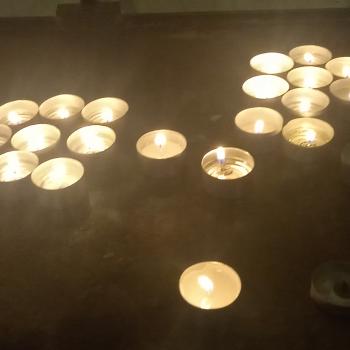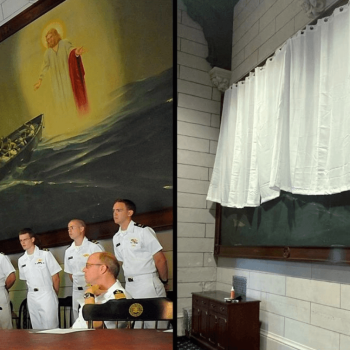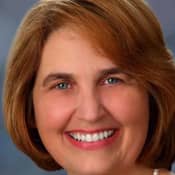Dr. Maura Hearden describes Mary as a bridge between denominations that have traditionally been at odds over Mary since the time of the Reformation:
During the time of the Reformation, and in the centuries after, Mary became a kind of a symbol for everything that was 'Catholic.' So Catholics loved her and exulted her . . .
Even though the original Protestant Reformers had devotions to Mary, as time passed, because of Mary's association with Catholicism, the Protestant traditions tended to downplay Mary a great deal, until you get up to our current times. Often my Protestant Christian friends will tell me that Mary is someone you [bring] out at Advent and Christmastime, and then you put her back in the closet afterwards . . . you just don't think about her much at all because that's 'a Catholic thing.'
There were many misunderstandings that developed and Mary actually became a source of division within the Body of Christ, which is something that must have struck to the very core—or the heart—of her Son. Here, her Son has given us every opportunity to become one in his Body. And his mother—the woman he loved above all else—is a source of division. After Vatican II, [many denominations came together and found] his mother should be a point of unity rather than a point of division."
Kimball and Hearden both agree that by studying the life of Mary certain abstract theological formulations become more concrete. Discussions about Mary also shed light upon discussions of "Who is Christ?" and "What is the Church?" For Mary's life is linked to each.
Kimball: There's a lot of surprises . . . and I think if we speak of one of the true fruits of this Society since its founding in 1967, in England . . . is that when people . . . attend one of our conferences, or . . . pick up this book, [they find] information about Mary, or devotion for Mary, or customs or traditions that are new to the reader. And, as they reflect on it, it enriches them.
Hearden describes a chapter penned by Mariologist Sr. Mary Catherine Nolan, OP, discussing the subject of Mary and Islam.
Often you hear passing references that Muslims revere Mary . . . Mary plays a part in the Qur'an. She is revered as someone without sin. She is revered as a model of purity, as a model of salvation, and the mother of the great prophet, Jesus. That last point is, of course, the great dividing line between Christian and Muslim belief.
But it is interesting when you compare the story of Mary in the Qur'an and the story of Mary in Christianity you see both similarities and differences.
One area of agreement is that the subject of Mary's virtues are extolled both by Christians and Muslims. Hearden adds that those places of agreement can be starting points for peaceful dialogue between peoples, in imitation of Mary's virtues.
This book is for adult readers looking to explore and understand their neighbors who differ in faith from themselves.
Kimball: This book is readable in that each chapter is a separate stand alone essay. Perhaps you'd like to start reading the chapter that represents your own faith tradition. Then after that, you may wish to read a chapter from another tradition. The reader may connect with some of the chapters but not all of them . . . and that's okay . . . This book is a little compendium . . . and a way to get a bit of an educated idea as to how other [faith traditions] come to understand Mary.
Hearden: It has often been said that Mary is the key to Christian unity. She is a mother. She does want us to come together. Mothers want people to love their children. Her child is the Perfect Child and He is God . . . Her mission in salvation history is to bring God to the world and the world to God through her son. That's what she has done in history, and what she is doing now, at least, in part through the ESBVM.
As President of the U.S. Chapter of the ESBVM, and describing her years of ecumenical work at various ESBVM congresses and meetings, Kimball reflects openly about the fruitful effects toward unity that follow dialogue and research regarding the Mother of Christ.
I have seen people in tears. I have seen people embracing one another, who would have never approached each other, who would never have spoken with each other . . . And if you stopped them and ask them, 'Why is it?' The answer is usually 'We've discovered we have a common mother.'
People have a regard for "Mother."
Indeed, that speaks to my own experience as a mother. And I've observed powerful changes that a mother's love can bring, and the far-reaching influence a mother can have within an extended family. The members of the ESBVM experience this on the ecumenical level with growing interest. Kimball concludes:





